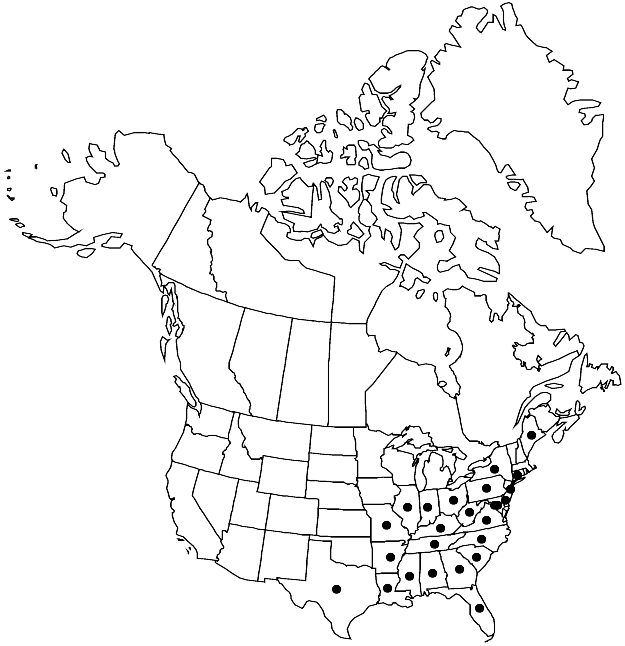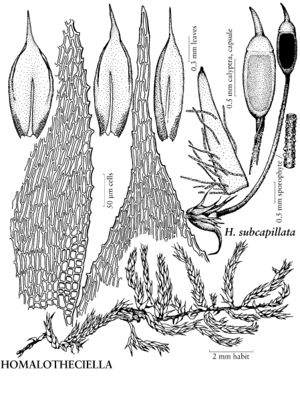Difference between revisions of "Homalotheciella subcapillata"
in H. G. A. Engler and K. Prantl, Nat. Pflanzenfam. 232/233[I,3]: 1133. 1908.
FNA>Volume Importer |
FNA>Volume Importer |
||
| Line 21: | Line 21: | ||
|name=Burnettia fabrofolia | |name=Burnettia fabrofolia | ||
|authority=Grout | |authority=Grout | ||
| − | }}{{Treatment/ID/Synonym | + | }} {{Treatment/ID/Synonym |
|name=Homalotheciella fabrofolia | |name=Homalotheciella fabrofolia | ||
|authority=(Grout) Brotherus | |authority=(Grout) Brotherus | ||
| − | }}{{Treatment/ID/Synonym | + | }} {{Treatment/ID/Synonym |
|name=Homalothecium subcapillatum | |name=Homalothecium subcapillatum | ||
|authority=(Hedwig) Sullivant | |authority=(Hedwig) Sullivant | ||
| − | }}{{Treatment/ID/Synonym | + | }} {{Treatment/ID/Synonym |
|name=Pterogonium decumbens | |name=Pterogonium decumbens | ||
|authority=Schwägrichen | |authority=Schwägrichen | ||
| − | }}{{Treatment/ID/Synonym | + | }} {{Treatment/ID/Synonym |
|name=Pterigynandrum brachycladon | |name=Pterigynandrum brachycladon | ||
|authority=P. Beauvois ex Bridel | |authority=P. Beauvois ex Bridel | ||
| Line 48: | Line 48: | ||
|elevation=low to high elevations (0-2000 m) | |elevation=low to high elevations (0-2000 m) | ||
|distribution=Ala.;Ark.;Conn.;Del.;D.C.;Fla.;Ga.;Ill.;Ind.;Ky.;La.;Maine;Md.;Miss.;Mo.;N.J.;N.Y.;N.C.;Ohio;Pa.;S.C.;Tenn.;Tex.;Va.;W.Va. | |distribution=Ala.;Ark.;Conn.;Del.;D.C.;Fla.;Ga.;Ill.;Ind.;Ky.;La.;Maine;Md.;Miss.;Mo.;N.J.;N.Y.;N.C.;Ohio;Pa.;S.C.;Tenn.;Tex.;Va.;W.Va. | ||
| − | |discussion=<p>Homalotheciella subcapillata is distinguished as small, glossy, creeping, pinnate plants bearing leaves with long, slender tips crowded on short branches. The species is easy to recognize under the microscope by its leaves with denticulate margins, weak costa, and quadrate alar cells. The delicately haired calyptra also is distinctive among Brachytheciaceae, as most species of the family have naked calyptrae. Pylaisiella selwynii (Hypnaceae) can be very similar to H. subcapillata, but differs in its more regularly curved branches and ecostate entire-margined leaves.</p> | + | |discussion=<p><i>Homalotheciella subcapillata</i> is distinguished as small, glossy, creeping, pinnate plants bearing leaves with long, slender tips crowded on short branches. The species is easy to recognize under the microscope by its leaves with denticulate margins, weak costa, and quadrate alar cells. The delicately haired calyptra also is distinctive among Brachytheciaceae, as most species of the family have naked calyptrae. Pylaisiella selwynii (Hypnaceae) can be very similar to <i>H. subcapillata</i>, but differs in its more regularly curved branches and ecostate entire-margined leaves.</p> |
|tables= | |tables= | ||
|references= | |references= | ||
| Line 72: | Line 72: | ||
|publication year=1908 | |publication year=1908 | ||
|special status=Endemic;Selected by author to be illustrated | |special status=Endemic;Selected by author to be illustrated | ||
| − | |source xml=https://jpend@bitbucket.org/aafc-mbb/fna-data-curation.git/src/ | + | |source xml=https://jpend@bitbucket.org/aafc-mbb/fna-data-curation.git/src/8f726806613d60c220dc4493de13607dd3150896/coarse_grained_fna_xml/V28/V28_684.xml |
|genus=Homalotheciella | |genus=Homalotheciella | ||
|species=Homalotheciella subcapillata | |species=Homalotheciella subcapillata | ||
Revision as of 18:07, 18 September 2019
Plants glossy. Stems 0.2 cm, branches short, ascending-erect, straight or often curved. Leaves 0.7–1.3 × 0.3–0.5 mm; margins plane; alar cells in 2–5 vertical rows; laminal cells 40–60 × 5 µm, smooth. Perigonia gemmiform, axillary on stem. Seta 0.5–1 cm, straight. Capsule exserted, 1–1.5 mm, smooth or wrinkled-plicate when dry; exothecial cells oblong-rectangular; stomata few, proximal on capsule; peristome pale; exostome teeth pale yellow-orange, 300 µm, external surface finely cross striolate, internal surface transversely ridged, fimbriate-bordered, papillose at apices. Calyptra 2 mm.
Phenology: Capsules mature Sep–Feb.
Habitat: Trunks of soft-barked trees, logs, roots, stumps, rock, mesic to wet forests
Elevation: low to high elevations (0-2000 m)
Distribution

Ala., Ark., Conn., Del., D.C., Fla., Ga., Ill., Ind., Ky., La., Maine, Md., Miss., Mo., N.J., N.Y., N.C., Ohio, Pa., S.C., Tenn., Tex., Va., W.Va.
Discussion
Homalotheciella subcapillata is distinguished as small, glossy, creeping, pinnate plants bearing leaves with long, slender tips crowded on short branches. The species is easy to recognize under the microscope by its leaves with denticulate margins, weak costa, and quadrate alar cells. The delicately haired calyptra also is distinctive among Brachytheciaceae, as most species of the family have naked calyptrae. Pylaisiella selwynii (Hypnaceae) can be very similar to H. subcapillata, but differs in its more regularly curved branches and ecostate entire-margined leaves.
Selected References
None.
